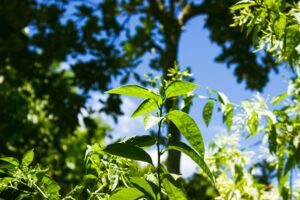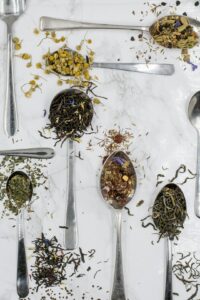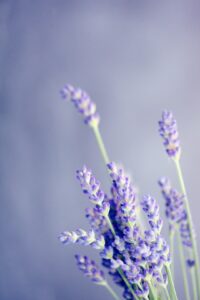Support our educational content for free when you purchase through links on our site. Learn more
[2023] Fresh Herbs for Tea: A Comprehensive Guide to Growing and Brewing
Table of Contents
- Quick Answer
- Quick Tips and Facts
- What are Herbal Teas?
- List of Herbs for Tea
- Step-by-Step Guide to Growing and Brewing Tea
- Tips for Growing and Brewing Fresh Herbal Tea
- How to Dry Fresh Herbs
- Equipment for Growing and Brewing Tea
- Related Recipes
- FAQ
- Conclusion
- Recommended Links
- Reference Links
Quick Answer
Fresh herbs for tea are a delightful addition to your tea collection, offering unique flavors and health benefits. By growing and brewing your own herbal teas, you can enjoy a truly personalized tea experience. From calming chamomile to refreshing peppermint, the possibilities are endless.
Quick Tips and Facts
- Growing your own herbs for tea ensures freshness and quality.
- Herbal teas are caffeine-free and can be enjoyed at any time of the day.
- Different herbs offer a wide range of flavors and health benefits.
- Harvest herbs in the morning for the best flavor and potency.
- Experiment with different herb combinations to create your own signature blends.
What are Herbal Teas?
Herbal teas, also known as tisanes, are beverages made from the infusion or decoction of herbs, spices, flowers, or other plant materials. Unlike true teas, which are derived from the leaves of the Camellia sinensis plant, herbal teas are caffeine-free and offer a variety of flavors and health benefits. They have been enjoyed for centuries for their soothing and therapeutic properties.
Herbal teas can be made from a single herb or a combination of herbs, allowing for endless possibilities in flavor and aroma. Some popular herbs used in herbal teas include chamomile, peppermint, lavender, hibiscus, and lemon balm. Each herb brings its own unique taste and potential health benefits to the brew.
List of Herbs for Tea
When it comes to choosing herbs for tea, the options are abundant. Here are some popular herbs to consider:
-
Chamomile: Known for its calming properties, chamomile tea is often consumed before bed to promote relaxation and improve sleep quality. It has a mild, floral flavor.
-
Peppermint: Refreshing and invigorating, peppermint tea is a popular choice for digestion and soothing an upset stomach. It has a cooling, minty taste.
-
Lavender: With its delicate floral aroma, lavender tea is known for its calming effects and can help relieve stress and anxiety. It has a subtly sweet and floral flavor.
-
Hibiscus: Vibrant and tangy, hibiscus tea is rich in antioxidants and can help support heart health. It has a tart, cranberry-like taste.
-
Lemon Balm: Known for its lemony scent, lemon balm tea is often enjoyed for its calming and mood-lifting effects. It has a mild, citrusy flavor.
-
Nettle: Nutrient-rich and earthy, nettle tea is believed to have detoxifying and anti-inflammatory properties. It has a grassy, slightly sweet taste.
-
Ginger: Spicy and warming, ginger tea is commonly used to soothe digestive discomfort and relieve nausea. It has a zesty, aromatic flavor.
-
Rosemary: With its pine-like aroma, rosemary tea is known for its cognitive benefits and can help improve memory and concentration. It has a woody, herbal taste.
-
Lemongrass: Citrusy and refreshing, lemongrass tea is often enjoyed for its digestive and immune-boosting properties. It has a bright, lemony flavor.
-
Echinacea: Believed to support the immune system, echinacea tea is often consumed during cold and flu season. It has a mild, slightly bitter taste.
Remember, this is just a small selection of the many herbs that can be used for tea. Feel free to explore and experiment with different herbs to find your favorites.
Step-by-Step Guide to Growing and Brewing Tea
Growing Herbs for Tea
-
Choose a sunny location: Most herbs thrive in full sun, so select a spot in your garden or balcony that receives at least 6 hours of direct sunlight per day.
-
Prepare the soil: Herbs prefer well-draining soil, so amend your soil with organic matter, such as compost, to improve its texture and fertility.
-
Select your herbs: Choose the herbs you want to grow based on your personal preferences and the growing conditions in your area. Consider factors such as hardiness, water requirements, and space availability.
-
Plant the herbs: Dig holes in the prepared soil, spacing the herbs according to their specific requirements. Place the herb plants in the holes and gently firm the soil around them.
-
Water and mulch: Water the herbs thoroughly after planting and apply a layer of mulch around the plants to conserve moisture and suppress weed growth.
-
Maintain the herbs: Regularly water the herbs to keep the soil evenly moist but not waterlogged. Prune the herbs as needed to encourage bushier growth and prevent them from becoming leggy.
Brewing Fresh Herbal Tea
-
Harvest the herbs: When the herbs have reached a suitable size, harvest them in the morning for the best flavor and potency. Pinch or cut off the desired amount of leaves or flowers.
-
Prepare the water: Boil fresh, filtered water and let it cool for a minute or two before pouring it over the herbs. The ideal water temperature varies depending on the herb, so refer to specific brewing instructions.
-
Infuse the herbs: Place the herbs in a teapot, tea infuser, or directly in a cup. Pour the hot water over the herbs and let them steep for the recommended time, usually 5-10 minutes.
-
Strain and enjoy: Remove the herbs from the tea and strain the liquid into a cup. You can sweeten the tea with honey or add a squeeze of lemon, if desired. Sip and savor the flavors of your homemade herbal tea.
Tips for Growing and Brewing Fresh Herbal Tea
-
Start with quality seeds or seedlings: Choose reputable sources for your herb seeds or seedlings to ensure healthy and vigorous plants.
-
Consider the growing conditions: Research the specific growing requirements of each herb to provide them with the optimal conditions for growth.
-
Experiment with herb combinations: Mix different herbs together to create unique flavor profiles and therapeutic blends.
-
Store dried herbs properly: If you choose to dry your herbs for later use, store them in airtight containers in a cool, dark place to maintain their flavor and potency.
-
Use fresh herbs in salads and cooking: Don't limit yourself to tea! Fresh herbs can also be used in salads, cooking, and baking to add flavor and aroma to your dishes.
How to Dry Fresh Herbs
Drying fresh herbs is a great way to preserve their flavors and extend their shelf life. Here's a simple method for drying herbs:
-
Harvest the herbs: Cut the herb stems in the morning after the dew has dried but before the heat of the day. Choose healthy, non-flowering stems for the best flavor.
-
Bundle the herbs: Tie the herb stems together with twine or a rubber band, creating small bunches. Make sure the bundles are not too thick to allow for good air circulation.
-
Hang the bundles: Hang the herb bundles upside down in a warm, well-ventilated area away from direct sunlight. This could be a kitchen or a well-ventilated room.
-
Wait for the herbs to dry: The drying process may take anywhere from a few days to a couple of weeks, depending on the herb and the humidity levels in your area. The herbs are dry when they crumble easily and retain their flavor.
-
Store the dried herbs: Remove the dried leaves from the stems and store them in airtight containers, away from heat and moisture. Label the containers with the herb name and date of drying.
Equipment for Growing and Brewing Tea
To grow and brew your own fresh herbal tea, you'll need a few essential tools and equipment. Here are some recommendations:
| Equipment | Description | Shopping Links |
|---|---|---|
| Garden Tools | Essential tools for gardening, including a trowel, pruners, and watering can. | Shop Garden Tools on Amazon |
| Teapot | A vessel for steeping and serving tea. Choose a teapot that suits your personal style and preferences. | Shop Teapots on Amazon |
| Tea Infuser | A device used to hold loose tea leaves or herbs during the steeping process. There are various types available, including ball infusers and basket infusers. | Shop Tea Infusers on Amazon |
| Teacup | A cup specifically designed for enjoying tea. Choose a teacup that is comfortable to hold and suits your aesthetic preferences. | Shop Teacups on Amazon |
Remember, these are just the basics. As you delve deeper into the world of growing and brewing tea, you may discover additional tools and equipment that enhance your tea experience.
Related Recipes
FAQ
What fresh herbs can be used for tea?
A wide variety of fresh herbs can be used for tea. Some popular choices include chamomile, peppermint, lavender, hibiscus, lemon balm, nettle, ginger, rosemary, lemongrass, and echinacea. Experiment with different herbs to find your favorites.
What herbs are best to infuse in tea?
The best herbs to infuse in tea depend on personal preference and desired flavor profiles. Some popular choices include chamomile for relaxation, peppermint for digestion, lavender for calming effects, hibiscus for tangy flavors, and lemon balm for a citrusy twist.
Are fresh herbs better for tea?
Fresh herbs are generally preferred for tea as they offer more vibrant flavors and aromas compared to dried herbs. However, both fresh and dried herbs can be used depending on availability and personal preference.
How long to boil fresh herbs for tea?
Fresh herbs should not be boiled for an extended period as it may result in a bitter taste. Instead, steep the herbs in hot water for the recommended time, usually 5-10 minutes, to extract their flavors and beneficial compounds.
Conclusion
Growing and brewing your own fresh herbal tea is a rewarding and enjoyable experience. By harnessing the power of nature, you can create unique blends that suit your taste preferences and offer potential health benefits. Whether you're sipping on a calming chamomile infusion or enjoying the invigorating flavors of peppermint, fresh herbs for tea are a delightful addition to your tea collection. Start your tea-growing journey today and explore the endless possibilities of herbal teas.
Recommended Links
- Shop Herbal Tea on Amazon
- Shop Herbal Tea on Walmart
- Shop Herbal Tea on Etsy
- Growing Teas™







